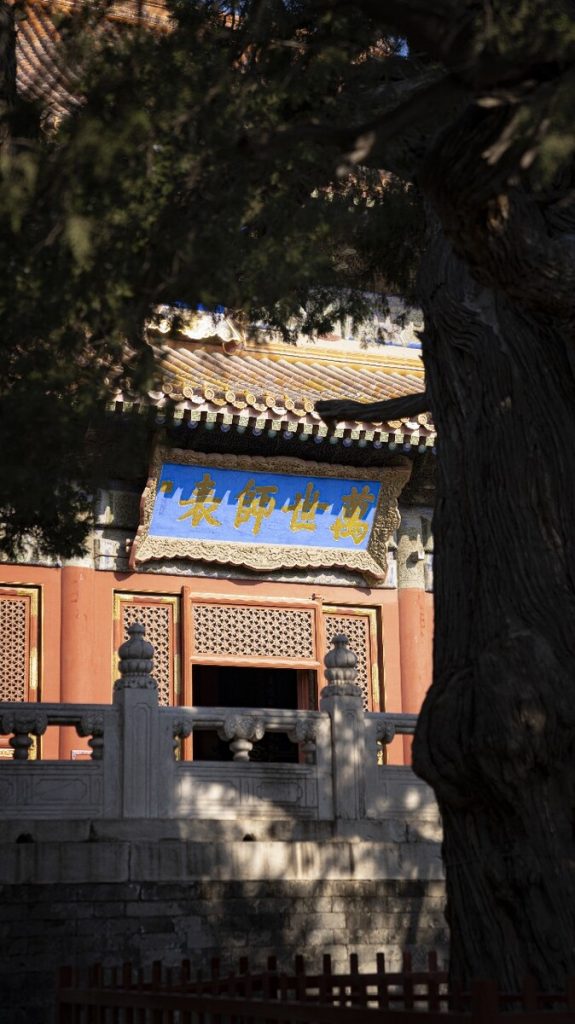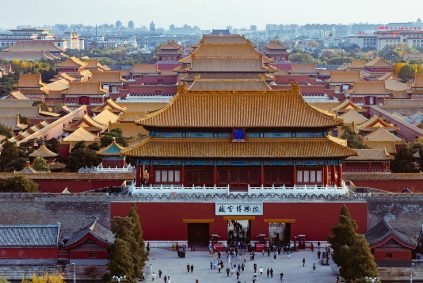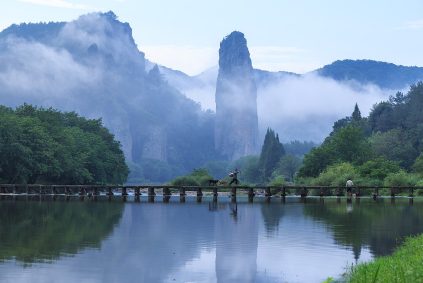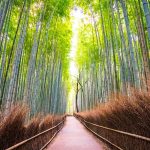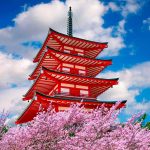تتميز المعالم الثقافية في معبد الكونفوشيوسية ومتحف الأكاديمية الإمبراطورية في بكين بأنها غنية ولها خلفية تاريخية عميقة. فيما يلي بعض المعالم الثقافية الرئيسية:
مجمع البناء الرئيسي للمعبد الكونفوشيوسي:
باب الحكيم: إنها البوابة الرئيسية للمعبد الكونفوشيوسي, يتميز بسقف كبير من طراز dougong على طراز الورك والجملون ونمط معماري متميز لسلالة يوان.
بوابة النجاح الكبرى: إنها البوابة إلى منطقة القاعة الرئيسية للمعبد الكونفوشيوسي, بأسلوب معماري مهيب وأنيق.
قاعة النجاح الكبرى: باعتباره المبنى الأساسي للمعبد الكونفوشيوسي, إنه المكان الرئيسي لتكريم كونفوشيوس وتلاميذه. تصميمها هو نفس تصميم قاعة الوئام الأعلى في المدينة المحرمة. داخل القاعة, تم تكريس مذبح كونفوشيوس, وإبراز مكانته السامية.
ضريح تشونغ شنغ: يقع في الفناء الخلفي للمعبد الكونفوشيوسي, إنه مكان لتكريم كونفوشيوس, الجد, وحكماء السلالات الماضية. إنه يقف بمفرده كساحة, تشكيل مجمع معماري قديم كامل.
نصب تذكاري لعلماء جينشي
داخل المعبد الكونفوشيوسي, هناك 198 شواهد منقوشة بأسماء علماء إمبراطوريين من أسرة يوان, سلالات مينغ وتشينغ, محفورة بالأسماء, الأماكن الأصلية وتصنيفات 51,624 العلماء الإمبراطوريين. إنها مواد فيزيائية مهمة لدراسة نظام الامتحانات الإمبراطوري الصيني القديم.
جناح الشاهدة الإمبراطوري
منازل الفناء المركزي 13 أجنحة الشاهدة الإمبراطورية, الحفاظ على اللوحات التي صنعها الأباطرة عبر التاريخ وتوثيق الأحداث التاريخية المتعلقة باحترام كونفوشيوس والكونفوشيوسية.
مجمع إمبريال كوليدج
بوابة جيشيان: إنها البوابة الرئيسية للكلية الإمبراطورية, بمناسبة الدخول إلى أعلى مؤسسة تعليمية قديمة.
بوابة الكلية الإمبراطورية: البوابة إلى منطقة التدريس, تجسيدا لجلال مؤسسة التعلم.
الممر المزجج: ثلاث غرف, مبنى من أربعة أعمدة وسبعة طوابق, مزينة بالبلاط المزجج باللونين الأصفر والأخضر, إنه الممر المزجج الوحيد في بكين الذي تم إنشاؤه خصيصًا للتعليم.
قاعة بيونج: مكان ألقى فيه أباطرة أسرة تشينغ محاضرات. لها شكل معماري فريد, محاطة بالمياه من جميع الجوانب, تجسيدا لمفهوم “السماء مستديرة والأرض مربعة”.
قاعة ييلون: مكتبة في الأصل, تم تحويله لاحقًا إلى قاعة محاضرات وهو المبنى التدريسي الأساسي للكلية الإمبراطورية.
جناح جينغيي: مبنى لتخزين الأضاحي, تجسيد معايير الآداب في التعليم القديم.
ثلاثة عشر غابة كلاسيكية
داخل المعبد الكونفوشيوسي, هناك غابة من اللوحات المنقوشة بالكلاسيكيات الثلاثة عشر للكونفوشيوسية, تقديم الأدب الكلاسيكي الكونفوشيوسي الكامل ويكون بمثابة مصدر مهم لدراسة الفكر الأكاديمي القديم.
الأشجار القديمة والشهيرة
في الفناء, المباني القديمة مخبأة بين أشجار الصنوبر الخضراء وأشجار السرو, بما في ذلك الأشجار الشهيرة مثل “لمس السرو الشر” و “إحياء شجرة الجراد”. هذه الأشجار القديمة, جنبا إلى جنب مع المباني, تشكيل كل عضوي للبيئة التاريخية.

